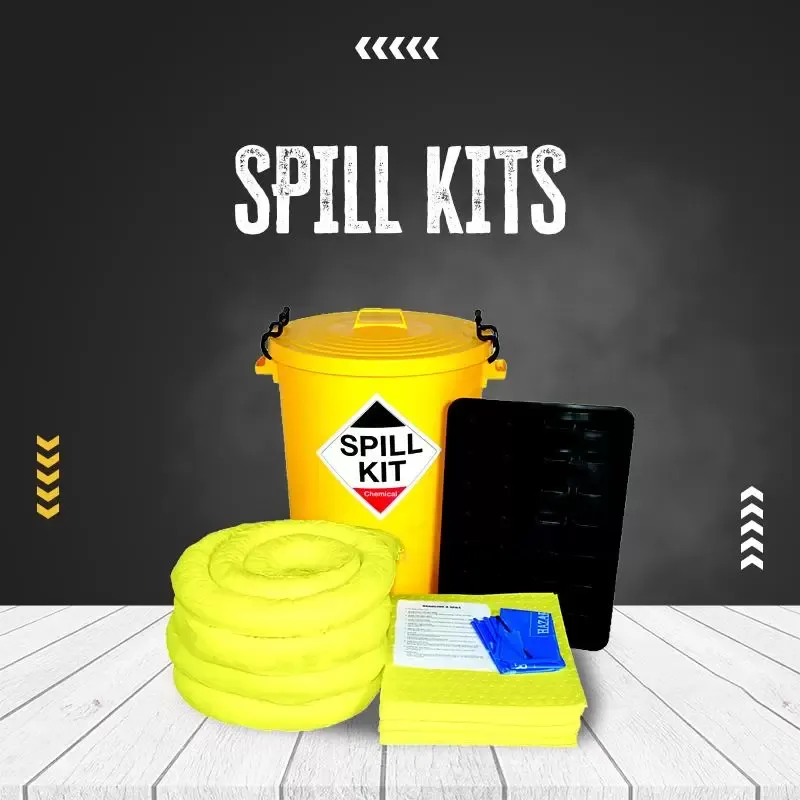What is in a Spill Kit?

When a liquid spill takes place—whether it is water, oil, chemicals, or something more hazardous—acting quickly is vital. That is where spill kits come in. These kits are a crucial part of every safety setup, designed to handle and contain liquid spills before they spread, damage property, or cause injury.
Much like a first aid kit manages medical emergencies, a spill kit aids in controlling environmental or workplace hazards caused by liquid spill accidents. You will find them in offices, labs, warehouses, public buildings, hospitals, and even kitchens—essentially, anywhere there is a risk of a spill that can result in the following:
- Slips
- Contamination
- Health Concerns
If you are unaware of what is included in these kits or are just curious about the details, you are at the right place. Let’s delve into what makes up a spill kit, what kinds of spill kits are available, and how they differ based on their purpose.
Understanding Spill Kits
At its core, a spill kit is a collection of absorbent tools and personal protective equipment that makes coping with liquid spills safer, cleaner, and more effective. These kits are particularly designed to manage everything from daily water spills to more severe hazards such as chemical leaks or oil discharges.
But don’t misapprehend them for only a mop and a bucket. Spill kits are much more advanced and customised to particular types of liquids. The contents are organised not only to absorb the spill but also to aid in preventing the liquid from spreading and enabling secure disposal of the materials afterwards.
Depending on the environment they are used in, spill kits are personalised to suit the type of spill that might take place there. This is why it is so important to select the appropriate type of spill kit.
Major Components Inside a Spill Kit
Although there are variations depending on the type of kit, most spill kits include a consistent set of core items. These tools work together to rapidly isolate, absorb, and securely eliminate hazardous liquids.
1. Absorbent Pads
These are usually the first line of defence when addressing a spill. Designed to soak up liquids effectively without dripping, absorbent pads are laid directly on the spill. They are one of the most flexible components, enabling users to swiftly absorb anything from water to oil or chemicals, depending on the kit type.
The pads are colour-coded according to the type of spill they are intended to clean up, making it easy to identify the right one for the job.
2. Absorbent Socks
These long, flexible tubes of absorbent material are utilised to surround and contain spills. They are particularly helpful for keeping liquids from flowing into difficult-to-access places, like under heavy machinery or into adjoining rooms.
Much like pads, these also come in various colours to indicate their intended use and compatibility with particular liquids.
3. Garbage Bags
Once the spill has been cleaned, you require a secure and hygienic way to get rid of used materials. Garbage bags included in the kit serve this purpose. They are designed to safely hold saturated pads, socks, and any other used items.
A few specialised kits might offer various disposal bags, depending on the types of liquids they manage.
4. Protective Gloves
Handling spills—especially those involving oils or chemicals—requires personal protection. That’s why gloves are a standard inclusion. Typically made of waterproof or chemical-resistant materials, they help keep hands safe during the cleanup process.
5. Safety Goggles
Your eyes are susceptible to fumes during spill cleanup, making safety goggles necessary. These safeguard against airborne irritants and liquid sprays, particularly when managing harmful substances.
Even for relatively minor spills, wearing goggles is recommended as a precaution.
6. Disposal Container
Everything in the kit is stored in a strong container—usually a plastic bucket or bin. However, the container is not only for storage. It is also used to securely transport and discard the used materials once the cleanup is complete.
In bigger setups, you may find wheeled bins or mobile carts for effortless transport, specifically when coping with large-volume spills.
Types of Spill Kits and Their Differences
Even though many kits contain the same items, they are divided into categories based on the types of liquids they are designed to handle. Every type comes with colour-coded absorbents and might contain slightly different materials to suit its particular use.
There are different types of spill kits, including:
General Purpose (Universal) Spill Kits
These are the most versatile and frequently used kits. Perfect for spills involving water-based liquids or hydrocarbons, general-purpose kits are equipped to manage a broad range of daily incidents.
They feature grey absorbents that can soak up both oil and water, making them beneficial for use in offices, workshops, and other interior environments where different kinds of spills might occur.
Oil Spill Kits
These kits are particularly designed to tackle oil and petroleum-based products. The absorbent materials in oil spill kits are generally white and engineered to repel water. This characteristic property enables them to float on water surfaces while absorbing oil, making them indispensable for marine environments or areas near bodies of water.
Their hydrophobic nature makes oil kits ideal for outdoor spills where water is also present.
HazMat Spill Kits
Designed for use in industrial, manufacturing, and other sectors that deal with hazardous substances, HazMat spill kits provide dependable containment and cleanup solutions. Accessible in sizes from 5 to 95 gallons, these kits comprise components specifically engineered for dangerous spills, offering the following for efficient response:
- Impressive Durability
- Distinctive Colouring
- High Absorbency
Acid Spill Kits
These kits are perfect for managing spills involving sulfuric, battery, hydrochloric, or phosphoric acid. They are suitable for use across sectors, such as the automotive and food industries. Available in 6.5-gallon to 95-gallon options, they are supplied in plastic pails or salvage drums, depending on the contents. Every kit features CHEMSORB Acid Neutraliser, good enough to absorb up to three times its weight while aiding in retaining a secure and uncontaminated environment.
Why the Right Kit Matters?
Utilising the inappropriate kit can not only make a cleanup inefficient, but it can also make it dangerous. For example, using a water-based absorbent on an oil spill won’t work effectively, and might even enhance slip risks. Similarly, utilising non-chemical-resistant gear during a hazardous chemical spill could put the cleaner’s health in jeopardy.
Every component in a kit is selected with safety, compatibility, and cleanup efficiency in mind. For that reason, it is necessary to match the kit type with the likely hazards of your particular environment.
Also, spill kits are available in different sizes. From compact kits designed to fit in vehicles to big mobile kits that can manage industrial-scale spills, there is an appropriate size for each requirement.
To Sum Up!
Spill kits are more than just a collection of cleaning tools—they are a key part of safety protocol in every environment where liquid spills might occur. With specialised absorbents, personal protective equipment, and dependable disposal options, these kits guarantee swift, secure, and efficient spill control.
Whether you are working in a factory, hospital, warehouse, or office, having a suitable spill kit on hand aids in safeguarding people, surfaces, and the environment from needless damage or harm.
Oil Spill Kit offers a range of spill kits customised to particular cleanup requirements, guaranteeing you are properly prepared regardless of the kind of spill you are dealing with. Select the correct kit, use it appropriately, and you will have one less hazard to feel apprehensive about.









 Home
Home  Checkout
Checkout